A Beginner's Guide to Surfing with Fish Surfboards
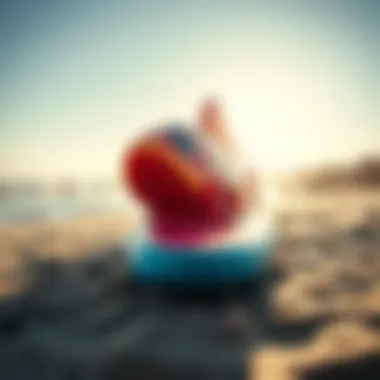
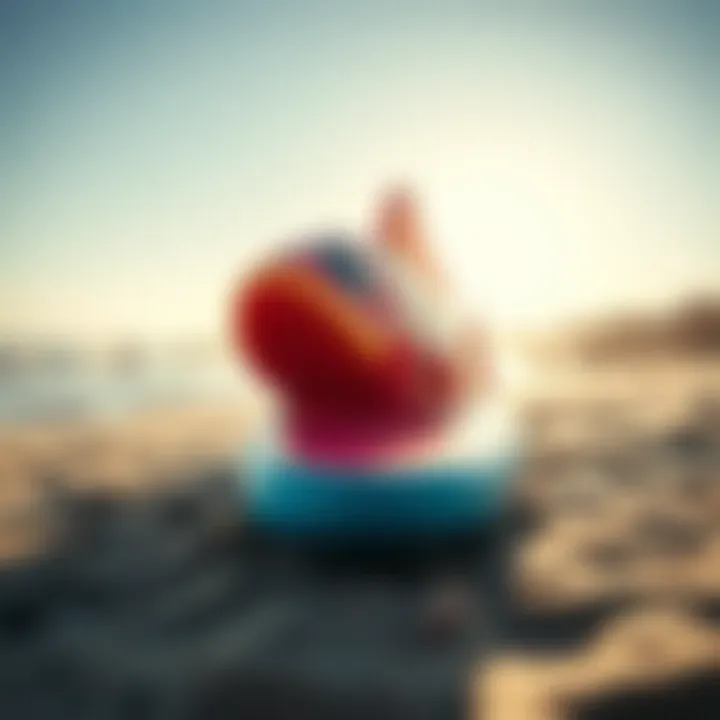
Intro
Surfing is an exhilarating hobby that captures the essence of freedom and connection with nature. Each wave tells a story, and each ride can be a lesson in balance, skill, and, frankly, humility. Among the myriad of surfboard shapes available, fish surfboards stand out for their unique design and competitive edge, especially for newcomers. With a wide tail and a more compact body, these boards offer a stable yet maneuverable experience that's especially forgiving for those just starting out.
In this guide, we will explore the nuances of fish surfboards, focusing on how they can elevate your surfing experience. We’ll cover the foundational techniques required, tips for selecting the right board, and essential maintenance practices so that your investment lasts. Whether you’re simply looking to catch your first wave or you aim to hone your techniques, this guide has something for everyone. From handling your turns to keeping your surf gear in top shape, let’s dive into all things fish surfboards.
Prolusion to Fish Surfboards
In the vibrant world of surfing, selecting the right surfboard can make all the difference, particularly for newcomers. One option that stands out is the fish surfboard, a unique and versatile board that caters to various skill levels. The information provided here aims to impart solid knowledge about fish surfboards, ensuring beginners can make informed choices as they step into the exciting realm of surfing.
Fish surfboards possess distinctive characteristics that set them apart from traditional shortboards and longboards. They typically feature a wider tail and a shorter length, designed for both speed and agility. Their shape provides surfers with the ability to ride smaller waves effectively, making them ideal for beginners who might be honing their skills in less-than-perfect surf conditions. Furthermore, understanding the technical aspects of fish surfboards helps address key considerations such as performance, stability, and overall surfing enjoyment for those just starting.
Learning the history of fish surfboards adds another layer of appreciation to their design. Originating in the late 1970s, these boards evolved from the desire for something that could maneuver well on smaller waves while still providing enough speed for thrill-seekers. Knowledge of their evolution can deepen the understanding of how surfing has transformed over the years, shaping the present and future.
Ultimately, diving into the nuances of fish surfboards is pivotal for any beginner surfer. With a clear grasp of what makes these boards unique and the rich history behind them, novices can cultivate a deeper connection to the sport, set realistic expectations, and authentically enjoy their journey on the waves.
"The best surfer out there is the one having the most fun." — Phil Edwards
What Makes a Fish Surfboard Unique
Fish surfboards stand out due to their
Understanding Fish Surfboard Design
Understanding the design of fish surfboards is crucial for beginners, as these elements play a significant role in not just how boards perform, but also how accessible and enjoyable they are for those just starting out. Fish surfboards are characterized by their unique shapes, materials, and construction, all of which contribute to their distinct advantages in various surf conditions. Gaining insight into these design components helps new surfers make informed choices about the type of setup that best suits their needs.
Shape and Dimensions
The shape and dimensions of a fish surfboard are foundational to its performance. Fish boards typically feature a wider outline and a shorter length compared to more traditional surfboards. This broader profile provides enhanced stability, allowing beginners to build confidence while paddling and riding waves. A typical fish surfboard might measure between 5’4" to 6’2" in length, with increased width at around 20" to 21".
This width provides extra surface area, which helps keep the board buoyant and keeps the rider from sinking too deep into the water. Plus, the swallowtail design helps in maneuverability, making sharp turns easier and less intimidating for novice surfers. In small to medium waves, this design is particularly advantageous, as it allows for quick bursts of speed and easier transitions.
Material Considerations
When selecting a fish surfboard, understanding the material is equally important. Most fish surfboards are constructed from foam, fiberglass, and epoxy resin. Foam boards are lighter and often more forgiving for new surfers who might not yet have perfect balance. On the other hand, fiberglass options might offer a bit more durability for surfers who are looking for something that can withstand a bit of rough handling.
Epoxy boards present a modern alternative; they are not only lightweight but also provide superior buoyancy and durability compared to traditional polyester boards. Many fish surfboards sport a foam core surrounded by fiberglass or resin layers, balancing weight with resilience.
Budget can also play a part in material choice. While higher-end boards might use advanced composite materials for strength and performance, more budget-friendly options are also available and can serve as great learning tools for beginners.
Fin Configurations
A significant aspect of fish surfboard design is the fin configuration. Fish boards often come equipped with two to three fins, offering flexibility in how they can perform in different conditions. The most common setup is a twin fin, which provides greater speed and maneuverability. This setup lends itself well to making quick turns in smaller waves, making it especially friendly for learning surfers.
Alternatively, adding a center fin can transform a twin fin setup into a thruster configuration. This semi-tri-fin arrangement allows for a little more stability and control, which can help beginners feel more secure as they ride
"The right fin setup can dramatically influence your surfing experience; it’s not just about how many fins but how they work together to deliver performance."
In a nutshell, understanding the shape, materials, and fin configurations of fish surfboards is vital for making an informed choice as a beginner. These design elements don’t just define the surfing experience—they can elevate it, transforming a steep learning curve into a more gradual and enjoyable one. To amplify your understanding, exploring forums such as reddit.com can provide first-hand insights and tips from fellow surfers.
Why Choose a Fish Surfboard as a Beginner
When toeing the line between the shore and the surf, many aspiring surfers wonder which board will best help them catch their first wave. Fish surfboards, with their distinctive design and user-friendly characteristics, are often pointed out as a great choice for newcomers. But what exactly makes them stand out? The answer lies in their unique traits that blend stability, maneuverability, and performance — especially in smaller waves, which are ideal for beginners.
Stability and Maneuverability
Fish surfboards are crafted to offer a delightful combination of stability and agility. Their wide, fish-like shape provides a solid base that can accommodate new riders learning their balance. This added stability plays a significant role, as it minimizes the chances of wipeouts.
- Wider Tail: Often, fish boards have a wider tail compared to traditional shortboards. This feature allows for a greater surface area, helping surfers maintain balance even when the waves get a little choppy.
- Shorter Length: Generally, they are shorter in length, which makes them easier to handle. Being able to maneuver the board with less effort is a real blessing for those just starting.
- Board Thickness: The thickness of these boards typically allows for adequate buoyancy. This buoyancy helps beginners paddle out much more easily and stay afloat, even when they aren't yet experts at paddling.
A beginner can find joy in those gentle swells, feeling the board respond to their shifts in weight with surprising ease. The design invites novice surfers to explore how the waves work without the frustration often associated with less forgiving boards.
Performance in Small to Medium Waves
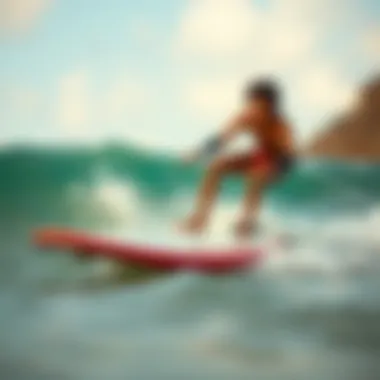
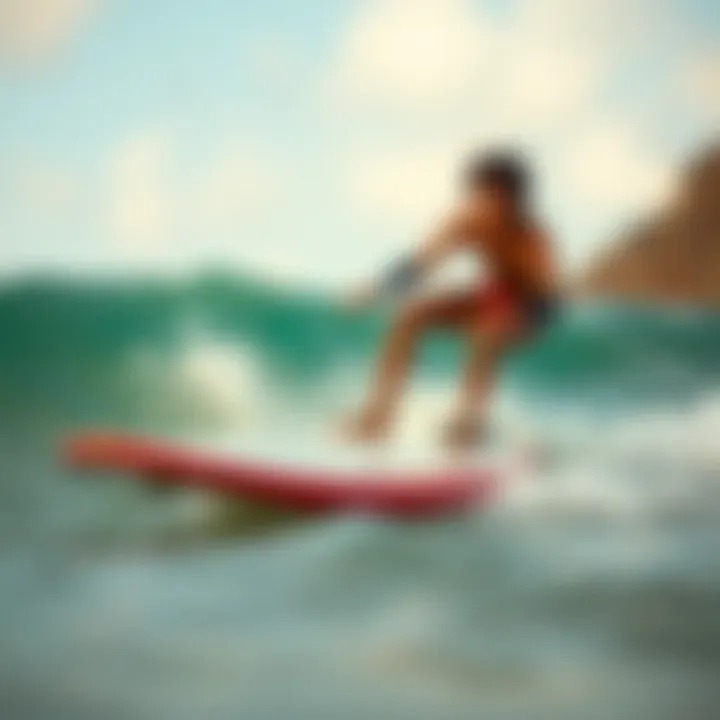
When it comes to the surf conditions most novices encounter, fish surfboards have got the upper hand. They excel particularly well in small to medium-sized waves, making them a favorite among beginners who might feel intimidated by larger swells.
- Reactivity: The well-thought-out design enables quick turns and agile movements. This means early surfers can catch waves earlier and ride them out longer, easing their transition into the sport.
- Speed: In the often gentle waves that beginners face, fish surfboards can be surprisingly fast. Their design helps them gain speed quickly, meaning that catching a wave doesn't require Olympic-level paddling skills.
- Versatility in Conditions: The ability of a fish surfboard to perform well in various ocean conditions gives newcomers the comfort of knowing they can keep riding regardless of slight fluctuations in wave sizes. This versatility is key to building confidence.
Choosing a fish surfboard as a beginner is not only about selecting a tool; it's about embracing a learning experience nurtured by thoughtful design and performance. With each session, they can refine their skills, finding joy in both the craft of surfing and the endless motion of the ocean.
"Surfing is not just a sport; it's a dance with the waves. The right board allows you to find your rhythm."
The world of fish surfboards certainly provides a splendid gateway for surfing novices. Consider these crucial aspects when deciding, and you'll be well on your way to embarking on an exhilarating surf journey.
For more detailed insights, check out resources such as Encyclopedia Britannica or visit relevant communities on Reddit.
The waters are waiting, and your fish surfboard could just be your ticket to joining a vibrant surf culture.
Selecting the Right Fish Surfboard
Choosing the right fish surfboard can feel akin to picking a partner in a dance. You need something that complements your moves, supports your journey, and enhances your experience on the water. For beginner surfers, this decision is pivotal, as the right board can dramatically affect not just your enjoyment of surfing but also your pace of learning. In this section, we delve into key aspects that should guide your selection process.
Assessing Skill Level
A pivotal first step in selecting your fish surfboard is understanding your own skill level. Are you a total novice, or do you have some sessions logged? The answer to that question determines where you should start. A fish surfboard offers various levels of responsiveness, and beginners often do best with a board that prioritizes stability.
- If you're just starting out, look for wider boards with a flat rocker. They give more surface area, helping with paddling and stability when catching waves.
- As you post more sessions on the waves, consider boards that allow for higher performance and agility. More experienced surfers may opt for narrower tails to facilitate sharper turns.
Keep in mind that some surf shops offer boards for rental or demo. This can provide insight into how different shapes respond under your feet. Don't hesitate to seek advice from instructors who can provide personalized recommendations based on where you are in your surfing journey.
Weight and Height Considerations
Your physical attributes, namely weight and height, should influence your choice of fish surfboard. Similar to needing the right size glove to play baseball, having the appropriate board size can enhance your control and performance in the water.
- For weight: Heavier surfers should look for fish boards with more volume and width to maintain buoyancy. Remember, the more buoyant the board, the better it supports your weight while paddling.
- For height: Taller surfers may also benefit from longer boards as they leg length can affect balance and paddling efficiency. A good rule of thumb? A fish surfboard should generally measure up to chin height or slightly below for optimal performance.
When you find a board that fits you well, it not only instills confidence but also allows you to progress effectively.
Budgetary Constraints
Surfing isn't just about catching waves; it’s also about the investment in equipment. New surfers may wonder how to strike a balance between quality and affordability when selecting a fish surfboard. Your budget is crucial and considering this variable can make all the difference.
- Determining your budget: Start with an idea of how much you can comfortably spend. Quality fish surfboards generally start in the lower hundreds and can escalate based on brand, material, and features.
- Options within budget: Consider your options carefully. There are many reputable brands that deliver solid boards at reasonable prices. Brands like Softech or NSP are known for providing quality at an entry-level price point, which might be ideal for beginners.
- Second-hand surfboards: Also, don’t rule out the second-hand market. You can often find well-maintained boards at a fraction of the cost. However, check for any damages or excessive wear that could hinder the board's performance.
Ultimately, selecting the right fish surfboard requires thoughtful consideration of your skill level, physical attributes, and available budget. Whether it’s a shiny new investment or a gently used one, finding the board that resonates with your surfing ambitions will greatly enhance your experience.
"A wise surfer once said, ‘It’s not the size of the board that matters, but how well you can ride it.’"
With these crucial factors in mind, you'll be well-equipped to make an informed choice on the fish surfboard that will serve as your gateway into the thrilling world of surfing.
Essentials of Surfing Technique for Beginners
Understanding the fundamentals of surfing is vital for anyone stepping onto a fish surfboard for the first time. These techniques can act as the cornerstone of your surfing journey, providing you with not only skills but also the confidence to tackle the waves. Mastering these essentials can significantly enhance your experience, making it smoother and more enjoyable while simultaneously reducing the risk of accidents.
Paddling Techniques
Paddling is an integral part of surfing, especially when you're looking to catch that perfect wave. Good paddling technique not only helps you to position yourself accurately but also saves energy throughout your surf session. Your paddle stroke should be strong and controlled. Here’s how to get it right:
- Keep your body balanced: Your chest should be flat on the board, with your arms extended forward, allowing for an efficient reach.
- Use a symmetric motion: Alternate between your arms, reaching forward and pulling back towards your hips. This technique is akin to using a rowing motion, giving you better propulsion through the water.
- Stay relaxed: Holding tension in your body can slow you down. Keeping your muscles relaxed allows for a more fluid movement.
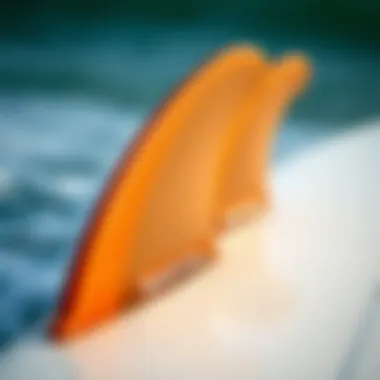
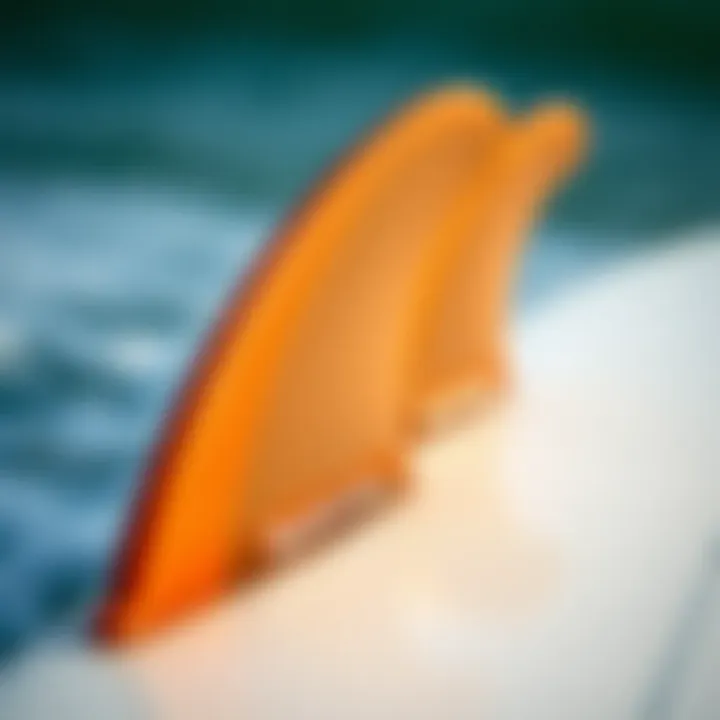
A good paddling technique ensures you can navigate through the waves with ease and greatly affects your overall performance.
Positioning on the Board
Your positioning on the surfboard is pivotal. Incorrect placement can lead you to miss waves, or worse, wipe out when catching one. Here are a few aspects to pay attention to:
- Find the sweet spot: For fish surfboards, this usually lies slightly back from the center. A good rule of thumb is to imagine that point as the fulcrum of a seesaw; too far forward, and you’ll nose dive; too far back, and you’ll struggle to catch waves.
- Engage your core: Keeping your core tight helps stabilize your body. This support not only keeps you upright but also makes for smoother transitions when adjusting your balance.
- Foot placement: Once you're on your feet, make sure your feet are shoulder-width apart, with a slight bend in your knees for maximum flexibility.
Catching Waves
Catching a wave can be one of the most exhilarating feelings while surfing. The key lies in understanding the science of waves:
- Watch the waves: Look for the right moment when the wave begins to break. The sweet spot usually happens when the wave is about to crest.
- Paddle hard: To gain momentum, take several strong strokes to get your speed up. When the wave begins to push you from behind, take one last strong paddle before popping up.
- Timing your pop-up: Timing is everything; as the wave passes beneath you, swiftly transition from paddling to standing up. If done correctly, you'll ride the wave rather than be swept along its side.
Making the most of your catch often comes down to understanding how the waves work and practicing these techniques until they become second nature.
Taking Off and Riding
Once you've caught the wave, the exhilarating moment of riding it comes next. This transition is crucial. The steps are as follows:
- Smooth transition from prone to standing: Do this in one fluid motion. Ensure your feet land in the proper position without over-stretching and losing your balance.
- Use your body weight: Lean into the wave with your knees slightly bent and shoulders relaxed. This position facilitates easier adjustments depending on the wave's shape and direction.
- Look ahead: Your body will follow where your head looks. Always keep your eyes focused ahead, steering your board in the desired direction.
In essence, mastering these techniques—paddling, positioning, wave catching, and riding—will set the groundwork for a successful surfing experience. Regular practice and patience will go a long way.
"With every wave, there's a lesson learnt; the sea teaches humility and the importance of persistence."
Whether you’re a newcomer to the waves or someone looking to sharpen your skills, investing time and effort into mastering these essentials offers the best chance for a fun and fulfilling surf experience.
Safety Practices While Surfing
Surfing, while exhilarating, can also be a bit treacherous if proper safety practices aren’t observed. For beginners tackling the waves on fish surfboards, understanding the nuances of safety can mean the difference between a fantastic day at the beach and an unfortunate accident. Emphasizing safety equips surfers with the knowledge to not only protect themselves but also respect the ocean's natural power.
Understanding Ocean Conditions
Every surfer must have a fundamental grasp of ocean conditions before even thinking about paddling out. The ocean is a living and dynamic entity, and factors such as tide, wind, and swell size can greatly influence surf conditions.
- Tide: The water levels can vary significantly, greatly altering wave formation. Shallow waters during low tide can expose hazards like rocks or reefs, while high tide may present larger, more powerful waves. Beginners should familiarize themselves with tide charts to know ideal surfing times.
- Swell Size and Direction: The size of the swell indicates the height of the waves. Smaller swells can be more forgiving, perfect for novice surfers, while larger swells demand stronger skills and experience. Additionally, the swell direction tells surfers where to expect waves to break, allowing for safer choices on where to surf.
- Wind: Wind can either create the ideal glassy surface or produce choppy conditions that can toss beginner surfers around like rag dolls. On-shore winds often make for bumpy rides, while off-shore winds tend to produce cleaner waves that are easier to ride.
These aspects are vital to assess before heading into the water. Keeping an eye on local surf reports on websites such as Surfline can provide real-time updates on conditions.
Using Proper Safety Gear
Safety gear is not just an afterthought; it's a necessity for novice surfers wanting to enjoy the experience while minimizing risks. While fish surfboards are often favored for their stability, additional protective measures can bolster confidence in the water.
- Leash: A surfboard leash is one of the most fundamental pieces of gear. It attaches the board to your ankle, minimizing the risk of losing your board to the waves. A runaway surfboard can be a danger to others in the water, and a leash helps keep it tethered.
- Wetsuit: Depending on the water temperature, a wetsuit can provide both warmth and protection against elements. Wearing one is essential in colder waters to prevent hypothermia, and it can also offer some cushioning against potential scrapes when falling or tumbling.
- Helmet: While not always common in traditional surfing, a helmet can be a wise choice for beginners, especially in more challenging surf conditions. It provides head protection against board impacts and helps to build confidence when messing up on a wave.
By investing in the right gear, beginners can increase their safety margin, setting the stage for a more enjoyable surfing experience.
Maintaining Situational Awareness
Staying aware while surfing is pivotal, especially for beginners who may still be finding their footing. Familiarity with the surf area and other surfers goes a long way in ensuring both personal safety and that of others.
- Look Around: Before heading out, check for any surfers already in the water. Understanding their locations helps prevent collisions and accidents. It is also wise to be aware of the surfing etiquette concerning take-offs and wave priority.
- Be Mindful of Hazards: Look out for rocks, reefs, and other potential dangers in the surfing area. Knowing where the water is shallow or where obstacles might arise can save you from unexpected spills or worse.
- Future Attention: Stay observant while riding waves, noticing changing conditions and incoming sets. Understanding the rhythm of the ocean allows you to anticipate the best spot to take off, which ultimately enhances performance.
"Surfing teaches you respect—not just for the waves but also for your fellow surfers and the ocean itself."
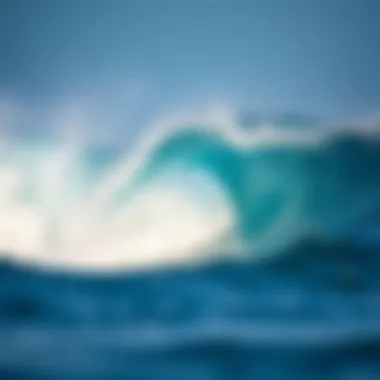
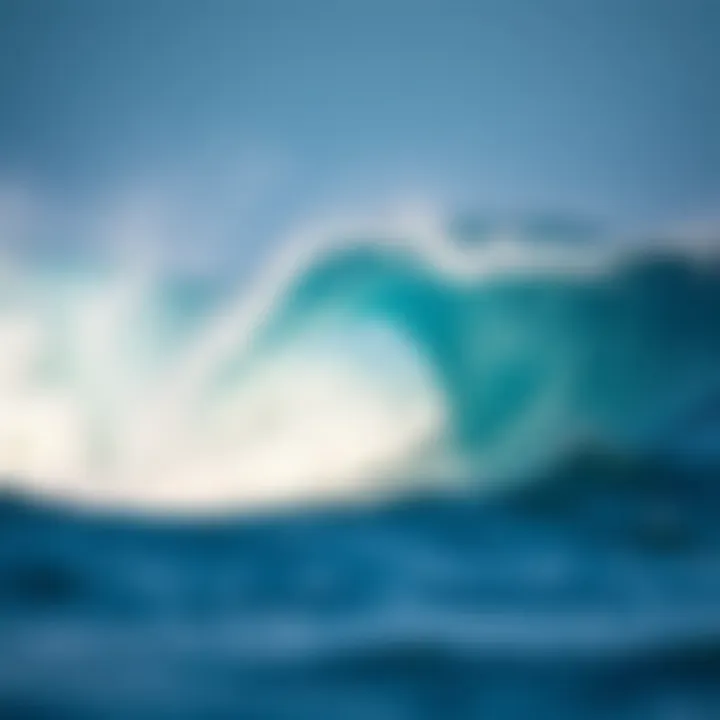
In essence, applying these safety practices while surfing not only protects you as a beginner but enriches your overall surfing experience. By learning to understand ocean conditions, using suitable safety gear, and maintaining situational awareness, beginners can set out on their surfing journey with confidence.
Maintenance and Care of Your Fish Surfboard
Taking care of your fish surfboard is crucial not just for longevity but also for your performance on the waves. A well-maintained board ensures that you’re riding smoothly, avoids unexpected repairs, and ultimately keeps your surfing experience enjoyable. This section will cover the necessary steps to maintain the integrity of your fish surfboard, including cleaning after use and storage tips.
Cleaning After Use
After a thrilling session riding the waves, it’s easy to toss your board aside, thinking about the next big surf or chilling on the beach. However, neglecting to clean your surfboard can lead to unwanted wear and tear. Saltwater, sand, and grime can affect the board’s finish, causing long-term damage.
To clean your fish surfboard properly:
- Rinse with Fresh Water: After each surf, rinse your board promptly with fresh water to wash away salt and sand. This minimizes corrosion and keeps the board’s surface intact.
- Use a Soft Cloth: Wipe your board down using a soft cloth. Avoid abrasive materials that can scratch the surface.
- Check for Dings: While cleaning, inspect for dings or cracks. Addressing these issues early can save bigger headaches down the road. Applying a bit of marine epoxy can help seal minor issues until you can bring it to a professional.
- Dry Properly: After cleaning, dry the board thoroughly. Leaving it wet can lead to mold or damage.
Taking these steps doesn’t have to take long. Just a few minutes can greatly extend the life of your fish surfboard and maintain optimal performance.
Storage Tips
Proper storage of your fish surfboard is just as vital as cleaning. Where and how you store your board will dictate its condition over time. Ideally, you want to mimic the best conditions for longevity, keeping your board safe from potential damage but also accessible for your next surf adventure.
Here are some practical tips for effective storage:
- Avoid Direct Sunlight: UV rays can degrade the board’s materials. Keep it out of direct sunlight, opting for shaded areas or a dedicated storage rack indoors.
- Use a Board Bag: Invest in a quality board bag with padding. This not only protects from knocks and dings when transporting but also minimizes exposure to direct sunlight when storing.
- Store Vertically: If you have limited space, storing your board vertically or on its side can reduce pressure on the fins and tail, helping to keep its shape intact.
- Keep Away from Heat Sources: Avoid areas that are too hot, like garages or attics, as heat can warp boards made from foam or fiberglass.
Proper storage can often be the difference between a board lasting several seasons versus just a few. Treat your gear with respect, and it’ll treat you well in return.
By incorporating these cleaning and storage practices into your routine, you'll not only maintain the aesthetics of your fish surfboard but also enhance its performance. A little effort goes a long way in preserving your investment and ensuring that your surfing experience is fantastic, every time.
Exploring Surf Culture
Understanding surf culture is crucial for anyone aiming to embrace the art of surfing with fish surfboards. Surf culture captures the essence of what it means to ride the waves beyond just the physical act; it's about community, passion, and a shared love for the ocean. It bleeds into every part of the surfing experience, from the equipment you choose to the friends you make along the way. It's not just a pastime; for many, it becomes a way of life.
The Role of Fish Surfboards in Surf History
Fish surfboards hold a notable place in surfing's rich tapestry. Introduced in the 1970s, they gave surfers new ways to approach wave riding, especially in smaller, choppier swells. Their shorter length and wider profile allow for more agile movements, which marked a shift in how many viewed traditional surfing. Fish boards encouraged innovation, leading to broader design experimentation among shapers. This pushed other designs and styles, making waves more accessible to a wider range of skill levels.
Today, these boards are not just nostalgic pieces but rather symbols of progress within the surfing community. They demonstrate how a simple design tweak can lead to monumental shifts in technique and philosophy. When you're on a fish surfboard, you're participating in history while carving your own path on the water.
Surf Community Interaction
The beauty of surfing lies in its community. Engaging with fellow surfers enhances the experience and enriches one's knowledge. Surf spots are often gathering places where stories are swapped, skills are honed, and friendships are formed. Whether you're a newbie paddling out or a seasoned pro, you’ll find that sharing tips and experiences with others elevates your understanding of the sport.
- Locals and Visitors: It's essential to be aware of the surf etiquette when interacting with locals. Each beach has its own culture and rules, often unwritten. Respecting those who surf there regularly can lead to valuable insights and a warm welcome.
- Surf Schools and Clinics: Many surf schools focus on fostering community. These places allow beginners to connect while learning essential skills. Surfers bond over shared challenges, passing helpful advice to one another, which can enhance one's learning curve significantly.
- Online Forums and Social Media: Platforms like Reddit, Facebook, or dedicated surf forums create vast networks for surfers to share experiences, advice, and inspiration. Engaging with these communities can lead to finding surfing partner or simply gaining insights on the latest trends.
"Surfing is more than just a sport; it’s a community bound by the shared love for the waves and the ocean."
Ending: Embarking on Your Surf Journey
Surfing with fish surfboards can be a thrilling and rewarding experience for beginners. This final section brings together the threads of knowledge woven throughout the article, highlighting the necessity of setting realistic goals as you embark on this aquatic adventure and the importance of continued learning. By understanding these crucial elements, aspiring surfers are better equipped to navigate not just the waves, but the learning curve associated with the sport.
Setting Realistic Goals
As you step into the vast world of surfing, it’s essential to have a clear picture of what you want to achieve. Setting realistic goals serves multiple purposes. First, it helps you maintain motivation. For instance, aiming to catch three waves on your first day might be overly ambitious, especially if you're just getting comfortable on your fish surfboard. Instead, focus on mastering the paddling technique, or simply standing up on the board without wiping out.
- Start Small: Begin with achievable objectives; maybe catching a single wave or practicing paddling.
- Progress Gradually: As you gain confidence, increase your goals. For example, once you can ride a small wave with stability, aim for two or three consecutive rides.
- Stay Flexible: Be prepared to adjust your goals based on conditions, such as ocean swell or tide changes.
These step-by-step milestones not only clarify your progress but also keep the joy of surfing alive, allowing you to appreciate each new skill as it develops.
Continuous Learning and Growth
Surfing is not merely a sport; it's a culture of continual learning. Once you’ve grasped the basics of riding the waves, there's always something more to master. The ocean is forever changing, and so are the techniques used in surfing. Engaging in ongoing education will enrich your experience.
- Seek Feedback: Interacting with instructors or fellow surfers can provide valuable insights. A simple tip from an experienced surfer about foot positioning or wave selection can dramatically improve your skill set.
- Watch and Learn: Take advantage of online resources, such as surfing blogs or YouTube channels, which focus on tutorials and techniques. Websites like reddit.com and forums dedicated to surf culture can offer practical advice and community support.
- Explore Local Surf Communities: Joining a local surf group can help you meet others who share your passion and can offer tips or even buddies to surf with. Having a circle can enhance learning, create lasting memories, and keep you motivated.



